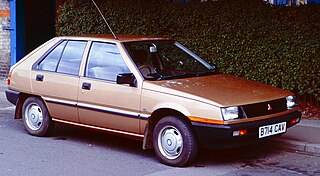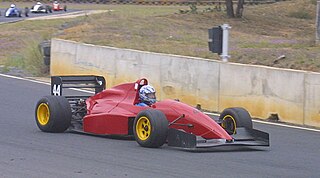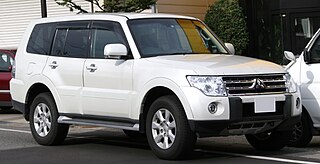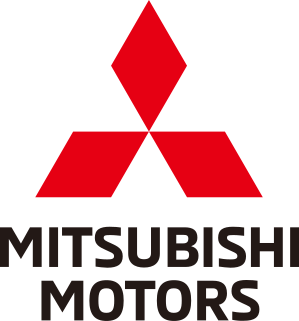
The Ford Telstar is an automobile that was sold by Ford in Asia, Australasia and Africa, comparable in size to the European Ford Sierra and the North American Ford Tempo. It was progressively replaced by the Ford Mondeo. It was named after the Telstar satellite.

The Opel Vectra is a large family car that was engineered and produced by the German automaker Opel. In the United Kingdom, the car was sold under the Vauxhall marque as the Vauxhall Cavalier and later as the Vauxhall Vectra, from 1995 onwards. It has also been sold by Holden in Australasia as the Holden Vectra, and by Chevrolet in Latin America as the Chevrolet Vectra.

The Mitsubishi GTO is a front-engine, all-wheel drive 2+2 hatchback sports coupé and Grand Touring car manufactured and marketed by Mitsubishi for model years (MY) 1990-1999, across a single generation with one facelift. Manufactured in Nagoya, Japan, the four passenger coupés were marketed in the Japanese domestic market (JDM) as the GTO and globally as Mitsubishi 3000GT. The Dodge Stealth — a badge engineered, mechanically identical captive import — was sold for model years 1991-1996 along with the 1991-1999 Mitsubishi 3000GT in North America. As a collaborative effort between Chrysler and its Japanese partner, Mitsubishi Motors, Chrysler was responsible for the Stealth's exterior styling.

The Mitsubishi Galant is an automobile which was produced by Japanese manufacturer Mitsubishi from 1969 to 2012. The model name was derived from the French word galant, meaning "chivalrous". There have been nine distinct generations with total cumulative sales exceeding five million units. It began as a compact sedan, but over the course of its life evolved into a mid-size car. Initial production was based in Japan, but from 1994 the American market was served by vehicles assembled at the former Diamond-Star Motors (DSM) facility in Normal, Illinois.

The Opel Omega is an executive car engineered and manufactured by the German automaker Opel between 1986 and 2003. The first generation, the Omega A (1986–1993), superseded the Opel Rekord, was voted European Car of the Year for 1987, and was available as a saloon or estate. The second generation, the Omega B, was manufactured from 1993 to 2003.

The Dodge Colt is a subcompact car manufactured by Mitsubishi Motors and marketed by Dodge for model years 1971-1994 as captive imports. Badge engineered variants included the Plymouth Champ and Plymouth Colt, marketed by Plymouth.

The Mitsubishi Magna is a mid-size car that was produced over three generations between 1985 and 2005 by Mitsubishi Motors Australia Limited (MMAL). Developed as a replacement for the Mitsubishi Sigma, each Magna generation derived from Japanese platforms re-engineered for the Australian market and conditions. Initially, Magna offered inline-four engines in a mid-size sedan package—a station wagon debuted in 1987. Over the years, each new series grew in size, and with the second generation of 1991, the range was bolstered by a luxury variant called Mitsubishi Verada and a V6 engine. The Magna/Verada became the first Australian-made vehicle to be exported worldwide in large numbers, predominantly as the Mitsubishi Diamante. The third and final iteration Magna/Verada launched in 1996, adding all-wheel-drive (AWD) from 2002, and receiving a substantial styling update in 2003. They were replaced by the Mitsubishi 380 in 2005.

The Mitsubishi Lancer is a compact car produced by the Japanese manufacturer Mitsubishi since 1973.

Mitsubishi Colt is a nameplate from Mitsubishi that has been applied to a number of automobiles since 1962. It was first introduced with a series of kei and subcompact cars in the 1960s, and then for the export version of the subcompact Mitsubishi Mirage between 1978 and 2002. Chrysler, Mitsubishi's longtime partner, also used the name when applying its long-running practice of rebadging Mitsubishi vehicles as the Dodge and Plymouth Colt captive imports for the North American market between 1970 and 1994.

The Mitsubishi Mirage is a range of cars produced by the Japanese manufacturer Mitsubishi from 1978 to 2003 and again since 2012. The hatchback models produced between 1978 and 2003 were classified as subcompact cars, while the sedan and station wagon models, marketed prominently as the Mitsubishi Lancer, were the compact offerings. The liftback introduced in 1988 complemented the sedan as an additional compact offering, and the coupé of 1991 fitted in with the subcompact range. The current Mirage model is a subcompact hatchback and sedan and it replaces the Mitsubishi Colt sold between 2002 and 2012.

The 6G75 or Cyclone V6 engine is a series of V6 piston engines from Mitsubishi Motors. Five displacement variants have been produced from 1986 to present day, with both SOHC and DOHC, naturally aspirated and turbo charged layouts. While MIVEC variable valve timing has also been implemented in some versions the 2.5, 3.0 and 3.5 L versions were also available with gasoline direct injection. This engine has been the flagship powerplant of the company except when they briefly built a V8 in 1999-2001. The staple of their high-end sedans, it was given twin-turbos for the Mitsubishi GTO, and became the most powerful car ever built by the company at the time.
Mitsubishi Sigma is an automotive nameplate that was used by the Japanese automobile manufacturer Mitsubishi Motors between 1976 and 1996. Mitsubishi has utilized the "Sigma" name on several different vehicles based on Mitsubishi Galant and Mitsubishi Diamante sold in various markets during this time.

Formula Holden was an Australian open wheel racing category introduced in 1989.

The Mitsubishi Chariot is a small multi-purpose vehicle (MPV) manufactured and marketed by Mitsubishi from 1983 to 2003. Based on the SSW concept car first exhibited at the 23rd Tokyo Motor Show in 1979, the MPV derives its nameplate from chariots used by the ancient Greek and Roman Empires.

The MitsubishiPajero is a full-size sport utility vehicle manufactured and marketed globally by Mitsubishi.

The Mitsubishi Triton is a compact pickup truck produced by Mitsubishi Motors. In Japan it was originally known as the Mitsubishi Forte and from 1991 as the Strada. In the United States Chrysler Corporation sold captive imports as the Dodge Ram 50 and Plymouth Arrow truck, and Mitsubishi marketed it as the Mitsubishi Mighty Max until 1996.

The Mitsubishi Galant VR-4 was the range-topping version of Mitsubishi Motors' Galant model, available in the sixth (1988–92), seventh (1992–96) and eighth (1996–2002) generations of the vehicle. Originally introduced to comply with the new Group A regulations of the World Rally Championship, it was soon superseded as Mitsubishi's competition vehicle by the Lancer Evolution, and subsequently developed into a high-performance showcase of the company's technology.

The Mitsubishi Delica is a range of cabover vans and pickup trucks designed and built by the Japanese automaker Mitsubishi since 1968. It was originally based on a cabover van and pickup truck introduced the previous year, also called the Delica, its name a contraction of the English language phrase Delivery car. This pickup truck, and a commercial van derived from it has received many names in export markets, being sold as the L300 in Europe, Jamaica and New Zealand, Express and Starwagon in Australia, and plain Mitsubishi Van and Wagon in the United States. The passenger car versions were known as Delica Star Wagon from 1979 until the 1994 introduction of the Delica Space Gear, which became simply Space Gear in Europe at least. The most recent version is called the Delica D:5. With the exception of the first, versions of all generations are still being sold in various international markets.

The Mitsubishi Debonair is a four-door luxury car, introduced by Mitsubishi Motors in 1964 to serve as their flagship passenger vehicle in the Japanese domestic market. The word debonair means gentle, courteous, suave, lighthearted, or nonchalant.
The Mitsubishi HSR is a range of concept cars exhibited by Mitsubishi Motors through the late 1980s and 1990s. There were six distinct iterations of the vehicle released biannually to coincide with the Tokyo Motor Show, with each model after the original identified by a Roman numeral suffixed to the name. The meaning of the acronym varied over the years. The first iteration meant Hi-speed Running Research, the second Hi-Sophisticated Research, and the third Human Science Research.






















